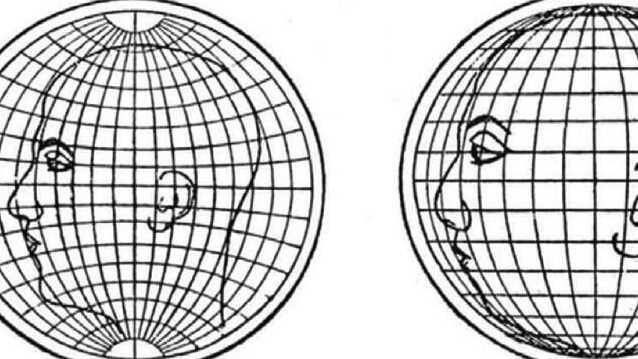How Picasso Found Truth in a Closed Room

One of the first words nixed by postgraduate education is “truth.” Amidst all the deconstructing and linguistic acrobatics, “truth” is just too troublesome and old fashioned. So, imagine my surprise to see the title of art historian T.J. Clark’s newest book, Picasso and Truth: From Cubism to Guernica. Originally delivered in 2009 as a series of six lectures at the National Gallery of Art in Washington, DC, Picasso and Truth shows how Clark rediscovered Pablo Picasso’s struggles with the concept of “truth” in his painting over the course of first half of the 20th century, starting with 1901’s The Blue Room (shown above) and ending with 1937’s Guernica. Using meticulous close reading of numerous paintings in between those two poles and philosophical assists from Friedrich Nietzsche and Ludwig Wittgenstein, Clark weaves his way through Picasso’s process, nimbly leaps over the landmines of strict biographical interpretation, and arrives finally at a complex, challenging, but coherent concept of how Picasso found truth in a closed room and spent the rest of his life trying to find it again.
Picasso and Truth continues Clark’s fixation with the sociological side of art history—what it meant then and, perhaps more importantly, what it means now. A 1982 takedown of art theorist Clement Greenberg specifically and the Formalist school of art criticism in general set off a feud with fellow big-name critic Michael Fried that still smolders. Whereas the Formalists believe that the value of a work of art exists solely within the work itself (its form), Clark and others hold that art not only doesn’t exist in a vacuum, but is actually shaped by the context of the forces surrounding it. What Michel Foucault spawned and New Historicists such as Stephen Greenblatt brought to Shakespeare studies and Renaissance literature, Clark brought to art interpretation. Does such an approach always work? After reading in 2006 Clark’s The Sight of Death: An Experiment in Art Writing (which I reviewed here), I came away thinking no. In The Sight of Death, Clark “experimented” with how prolonged exposure to Nicholas Poussin’s Landscape With a Calm and Landscape With a Man Killed by a Snake helped him think and rethink the events of September 11th. Although fascinating at times, the overall takeaway, at least for me, was frustration with Clark’s ability to make coherent sense of his claims. (In Clark’s defense, we were all a bit incoherent post-9/11.) It all sounded brilliant, and probably was, but the experiment lacked a finished execution to make it relevant and compelling.
Picasso and Truth, on the other hand, satisfies in ways that The Sight of Death didn’t. (Perhaps test driving his thoughts in lecture form before setting them down in book form helped. Incoherence before a paying audience, however sympathetic, can lead to crickets.) Resisting the default setting for Picasso studies, which Clark colorfully and acidly characterizes as “maudlin Picasso-worship marinated in Picasso gossip,” Clark keeps a steady and keen eye on the paintings themselves and the larger social picture Picasso found himself working in. Clark refrains from naming names, but I’m guessing that John Richardson’s name-dropping, anecdote-filled, 4-volume (so far) biography of Picasso sits somewhere on the list of those determined “to say nothing, or nothing in particular, about the structure and substance of the work Picasso devoted his life to,” settling instead for “second-rate celebrity literature.”
The specific thing Clark wants to say “about the structure and substance” of Picasso’s art starts (and kind of ends) in a closed room. “I cannot avoid the conviction that somewhere at the heart of Picasso’s understanding of life,” Clark argues, “lay an unshakable commitment to the space of a small or middle-sized room and the little possessions laid out on its table.” Clark sees Picasso’s nostalgia as part of modern art’s general trend towards “retrogression”—a look back that rejects looking at the present or the future. Paintings such as The Blue Room (shown above) created at the start of the 20th century, before Cubism, affectionately look back at the 19th century bourgeois society of Picasso’s childhood and set it within a protective, nurturing womb of, to use Clark’s term, “room-space.” “Space [in The Blue Room] is contained and enclosed… not claustrophobic… intimate,” Clark writes. “Nothing important is far away. Space, if I can put it like this, is belonging:… something possessable, but also… something desired, vulnerable, patiently constructed, easily lost.” The Blue Room contains all Picasso holds to be true, Clark suggests, and that truth’s slipping away. The subsequent story of Picasso’s art is the story of how he tries to hold on to that fragile, fading truth.
Cubism becomes the key to Picasso’s truth’s salvation (at least temporarily). Through Cubism’s approach of seeing all sides at once—the inside and the outside simultaneously—Picasso believed he finally arrived at the truest form of seeing. “Cubism was Bohemia’s last hurrah, its summa,” Clark writes, “and in this last flaring it laid out before us—lovingly, ironically—the claim that the life of art had made to the pleasures of the middle-class century.” When Cubism finally flared out like a brilliant supernova of exploded guitars and still lives, what was left? Picasso thus stood face to face with the “terror” of “Untruth: with what art has to be if Truth is no longer its province.” Once we exit the room (womb?) of truth, there’s no turning back, no recovering of the truth, but only a movement towards its opposite.
Guernica is what happens when you go outside, where wars and holocausts and monsters roam. Where The Blue Room is private, Guernica is public. Clark dedicates the entire last chapter/lecture to describing how Picasso didn’t “just [find] ways to bring the outside into the room,… but [found] ways into the outside.” Picasso in Guernica courageously faces the “problem” of “[t]he monster in the open—the body as an improbably public fact.” When the Luftwaffe rained bombs upon the innocents of the town of Guernica and inspired Picasso’s painting, the monsters came fully out into the open and no room could ever be safe again. It’s a major intellectual and emotional investment to follow Clark following Picasso’s journey, and you may feel overtaxed when Nietzsche and Wittgenstein enter the transaction, but the payoff of seeing Guernica and Picasso through Clark’s memory bank of interpretation is well worth the price.
But what does all this mean to us today? How does this “truth” or “untruth” touch us? Clark sees Guernica’s inspirational attack as “usher[ing] in the last century’s, and our century’s, War of Terror—terror largely administered by the state—in which tens of millions would die.” Note Clark’s phrase “War of Terror” and not the ubiquitous “War on Terror.” But in the face of that terrible terror, that terrible untruth, Picasso gives us one last image in Guernica of hope, a place “where women and beasts, in spite of everything, still fought to stay upright and see what was happening.” “That I can claim this at all (this enormity),” Clark concludes, “and hope to persuade you, is more than enough.” Picasso and Truth: From Cubism to Guernica, despite (and sometimes because of) the enormity of its subject matter, leaves you with more than enough to believe in at the end. Perhaps not any capital “T” truths, but at the very least the smaller, more easily cherished truths of human perseverance in the face of terror in all forms. If there were more Guernicas, and more Clarks to contemplate them for us, perhaps there would be fewer bombs and people wanting to drop them.
[Image:Pablo Picasso. The Blue Room, 1901. Oil on canvas, 50.48 x 61.6 cm. Acquired 1927. The Phillips Collection, Washington, DC. Image source.]
[Many thanks to Princeton University Press for providing me with a review copy of Picasso and Truth: From Cubism to Guernica by T.J. Clark.]





